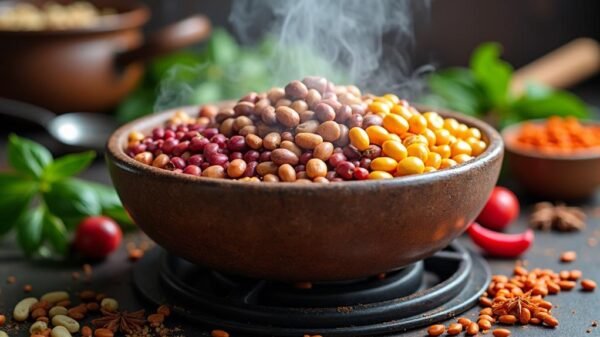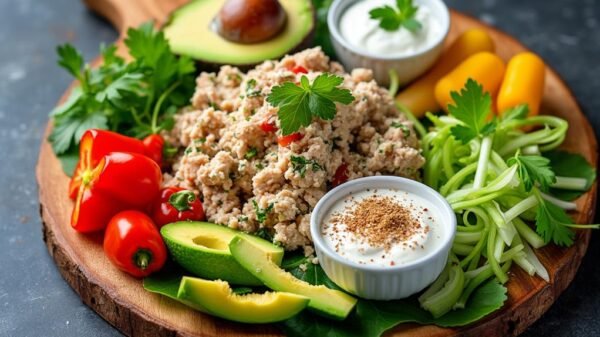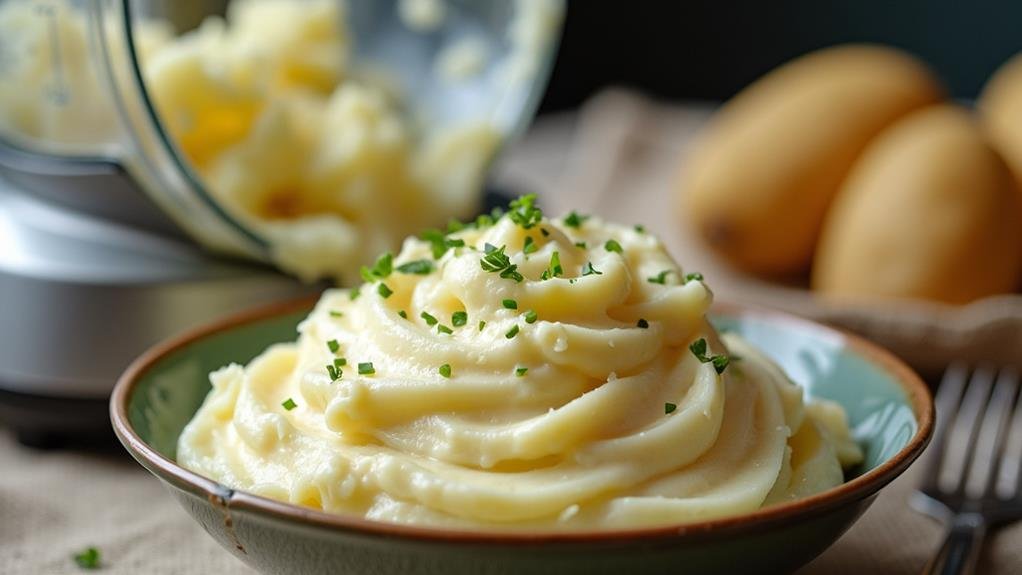The most common mistake when using a food processor for mashed potatoes is over-processing, which leads to an undesirable, gluey texture. High-speed blades agitate the potatoes excessively, releasing too much starch. This results in a dense paste rather than the sought-after light and fluffy consistency. To achieve creamy mashed potatoes, it is vital to handle the potatoes gently. Instead of a food processor, consider using a potato ricer or masher to control texture better and prevent overmixing. These tools can help create the perfect side dish, leading to more delicious culinary outcomes. Focusing on proper techniques is key.
Negative Effects of Food Processors
Food processors are handy kitchen gadgets, but when making mashed potatoes, they can create unwanted results. Many home cooks mistakenly prioritize efficiency over technique, leading to a common food processor error. The high-speed blades of these machines over-process potatoes, creating a gluey and stiff texture. This happens because the rapid action releases too much starch, causing the potatoes to stick together in a pasty consistency.
Guides for perfect mashed potatoes highlight the need for a light and fluffy texture. Unfortunately, using a food processor often works against this aim. Instead of achieving the creamy, velvety finish that many desire, the outcome tends to be a dense paste, which can be disappointing for those seeking a comforting side dish. When cooks neglect to consider how their equipment affects the final product, the likelihood of kitchen mistakes increases.
To steer clear of these issues, explore alternative methods like using a potato ricer or a food mill. These tools help maintain the potato's natural texture while achieving the desired consistency. By recognizing the drawbacks of food processors in mashed potato preparation, you can make better choices in your cooking adventures.
Common Mistakes to Avoid
When making creamy mashed potatoes, it's crucial to avoid common mistakes that can ruin the dish. One major error is overworking the spuds. Using a Cuisinart food processor can break down the potatoes too finely, releasing excess starch. This results in a gluey and stiff texture, far from the smooth consistency one desires in mashed potatoes.
Another mistake is choosing the wrong type of potato. Varieties like Russet or Idaho may seem perfect, but they can turn overly pasty if not handled properly, leading to disappointing results.
Additionally, trying to salvage gluey mashed potatoes can be frustrating; often, the only remedy is to start over, wasting valuable time and ingredients.
Understanding the importance of gentle handling during the mashing process is vital. Avoid using a food processor or blender; instead, opt for a traditional potato masher or ricer to maintain the potatoes' integrity. By recognizing these pitfalls, you can elevate your mashed potatoes, ensuring they remain a beloved dish on your dining table.
Better Alternatives for Mashing
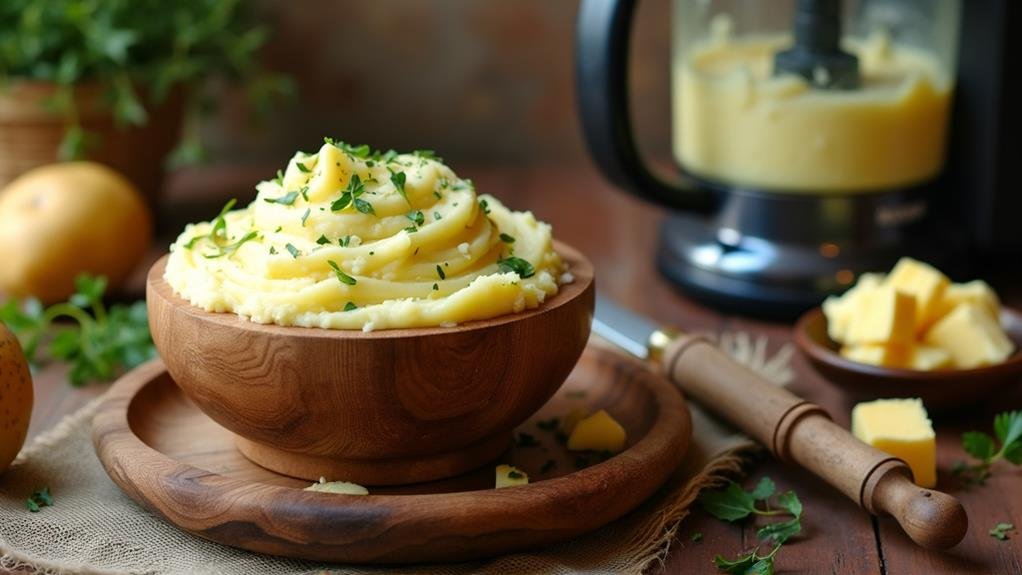
What kitchen gadgets can enhance the process of mashing spuds while preserving their desired texture? To achieve the perfect mashed potatoes, consider using a Rösle potato ricer or a Mouli food mill. These gadgets allow for a gentle mashing process that minimizes starch release, resulting in a light and fluffy texture. A potato ricer, in particular, forces cooked potatoes through small holes, creating a smooth consistency without the risk of overworking the starch.
Alternatively, a KitchenAid stand mixer equipped with a whisk attachment can also provide excellent results. This method incorporates air into the potatoes, enhancing their fluffiness while maintaining control over the mixing process. It is crucial to avoid over-mixing, which can lead to gluey potatoes.
For those who enjoy more hands-on techniques, using a traditional Oxmoor masher can also yield satisfying results. A simple yet effective tool, it allows for greater control over texture, enabling you to personalize the creaminess to your liking.
These alternatives not only improve the quality of your mashed potatoes but also empower you to embrace your culinary creativity, transforming a humble side dish into a delightful centerpiece of your meal.
Best Practices for Creamy Potatoes
To create exceptionally creamy mashed potatoes, focus on both technique and ingredient selection. The right choices elevate your dish, ensuring a delightful texture and flavor. Here are essential best practices to remember:
- Select Ideal Potatoes: Choose starchy varieties like Idaho russets or Yukon Golds for a fluffy texture.
- Limit Overworking: Gently mash the potatoes to prevent excess starch release, avoiding a gummy finish.
- Use Premium Ingredients: Incorporate fresh unsalted butter and heavy cream, as they significantly enhance flavor and creaminess.
- Achieve Smooth Consistency: Strive for a creamy texture by thoroughly combining ingredients, while still retaining some substance.
Enhancing Your Mashed Potato Quality
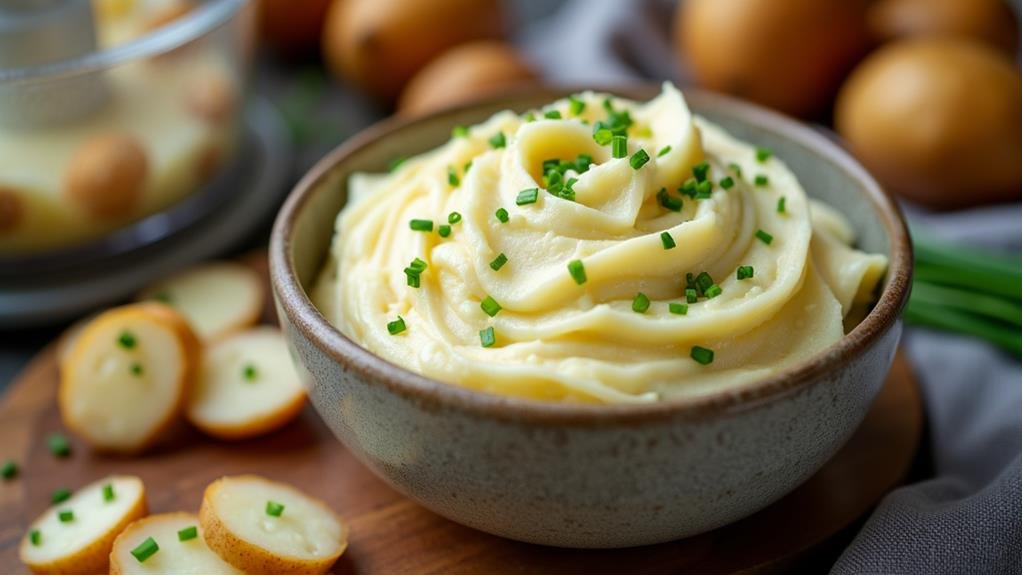
To elevate the quality of your mashed potatoes, focus on both ingredient choice and preparation method. Start with high-starch varieties, like Russet or Yukon Gold potatoes, which create a creamy consistency. Avoid excessive mixing, as it can cause the potatoes to release too much starch, resulting in a gummy texture. Instead, use tools such as a KitchenAid potato ricer or a Cuisinart food mill for gentle potato processing that maintains their structure.
In addition, enrich your mashed potatoes with dairy products like Land O'Lakes butter and heavy cream to impart a luxurious flavor and smooth mouthfeel. Heat the dairy before combining it with the potatoes to maintain warmth and ensure a harmonious blend. You can also enhance the taste by adding ingredients like roasted garlic or fresh herbs, allowing for customization that suits your palate.










